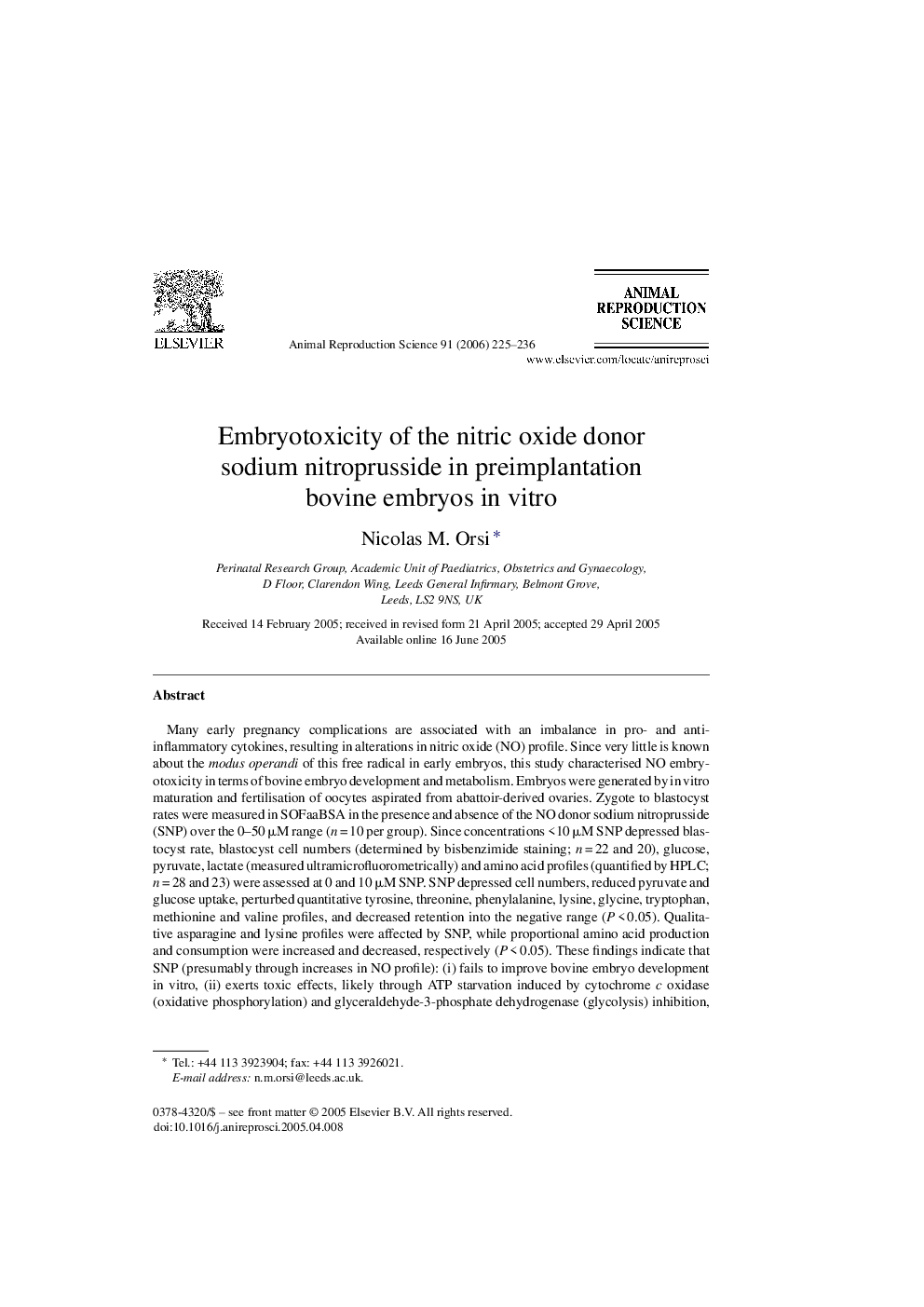| کد مقاله | کد نشریه | سال انتشار | مقاله انگلیسی | نسخه تمام متن |
|---|---|---|---|---|
| 2075053 | 1544832 | 2006 | 12 صفحه PDF | دانلود رایگان |

Many early pregnancy complications are associated with an imbalance in pro- and anti-inflammatory cytokines, resulting in alterations in nitric oxide (NO) profile. Since very little is known about the modus operandi of this free radical in early embryos, this study characterised NO embryotoxicity in terms of bovine embryo development and metabolism. Embryos were generated by in vitro maturation and fertilisation of oocytes aspirated from abattoir-derived ovaries. Zygote to blastocyst rates were measured in SOFaaBSA in the presence and absence of the NO donor sodium nitroprusside (SNP) over the 0–50 μM range (n = 10 per group). Since concentrations <10 μM SNP depressed blastocyst rate, blastocyst cell numbers (determined by bisbenzimide staining; n = 22 and 20), glucose, pyruvate, lactate (measured ultramicrofluorometrically) and amino acid profiles (quantified by HPLC; n = 28 and 23) were assessed at 0 and 10 μM SNP. SNP depressed cell numbers, reduced pyruvate and glucose uptake, perturbed quantitative tyrosine, threonine, phenylalanine, lysine, glycine, tryptophan, methionine and valine profiles, and decreased retention into the negative range (P < 0.05). Qualitative asparagine and lysine profiles were affected by SNP, while proportional amino acid production and consumption were increased and decreased, respectively (P < 0.05). These findings indicate that SNP (presumably through increases in NO profile): (i) fails to improve bovine embryo development in vitro, (ii) exerts toxic effects, likely through ATP starvation induced by cytochrome c oxidase (oxidative phosphorylation) and glyceraldehyde-3-phosphate dehydrogenase (glycolysis) inhibition, and (iii) may affect albumin endocytosis/hydrolysis or protein biosynthesis, rather than causing a loss of intracellular amino acids or simply depressing their metabolism.
Journal: Animal Reproduction Science - Volume 91, Issues 3–4, February 2006, Pages 225–236